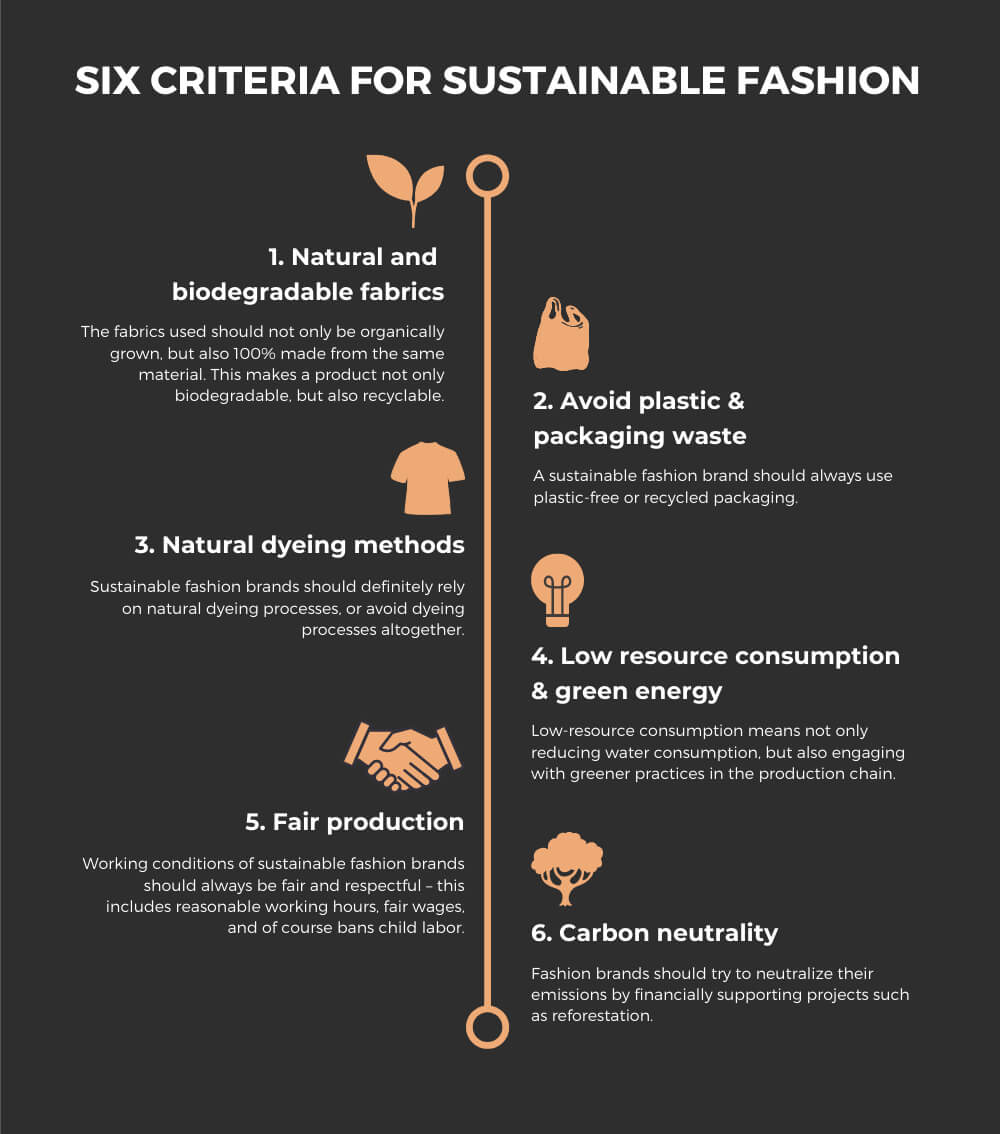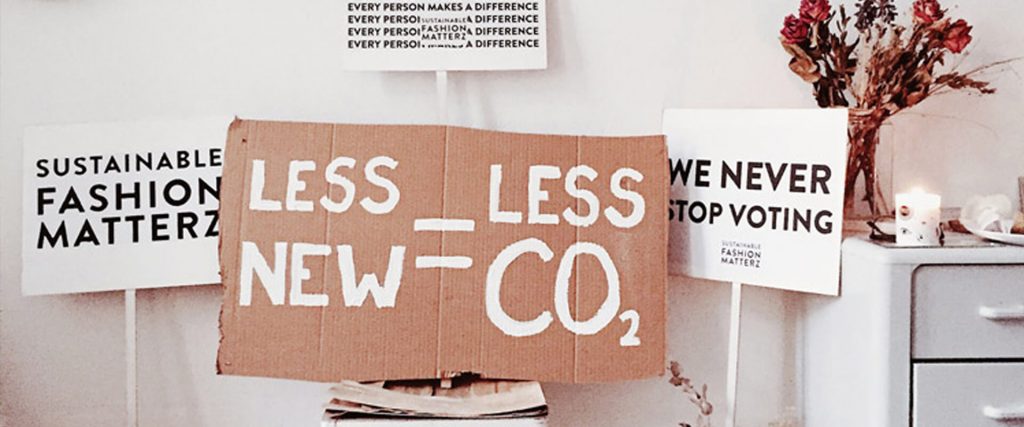Sustainability in fashion has evolved from a niche to a genuine revolution in the past few years. The demand for ecological, fair and sustainable fashion products is on the rise, fueled by a growing awareness about the environment, climate change prevention and conscious consumerism. And as a result, many brands and even major corporations have now included a sustainable line in their collections. But what exactly is sustainable fashion? At SANVT, we explore the topic from various angles and have filtered out six criteria that make a fashion brand truly sustainable.
Sustainable fashion is no longer a trend; in fact, it is now a fundamental prerequisite to remain relevant and competitive in the space. According to a study by Mintel, sustainability is the number one driver of shopping decisions for 30% of consumers – and among younger generations the awareness is even higher, hinting at an increasing trend. And this change in mindset is long overdue. The fashion industry is the second largest polluter after the oil industry, and takes a large toll on the environment. In addition to water pollution from chemical dyeing processes, microplastics from synthetic materials, packaging waste and poor working conditions, the fashion industry emits 2.1 billion tons of CO2 annually. This figure represents four percent of global CO2 emissions and is comparatively higher than the carbon emissions of Germany, France and the UK combined. As consumers, we contribute to 20 percent of this amount and are therefore co-responsible for almost half a billion tons of the CO2 gases emitted by the fashion industry every year. Of course, it fluctuates depending on how and, above all, how much clothing we buy; how often we wash it and whether we dispose, recycle or reuse it or not.

The reason for the alarmingly high numbers is above all the fact that in our fast-moving world, fashion companies no longer put out two or four collections a year, but up to twelve! The whole phenomenon is called fast fashion – fashion that is produced as quickly and as cost-effectively as possible in order to generate more demand and thus more profit through its short lifespan. Counter-movements such as slow fashion, circular economies and sustainable fashion, aim to halve these greenhouse gases by the year 2030! If the fashion industry fails to do so, the requirements of the Paris Climate Agreement to slow down global warming will not be met. It is crucial that we, as consumers, take our responsibility and make more conscious shopping decisions. But how can we be sure the clothes we buy are truly sustainable and fairly produced, and not just the result of another greenwashing campaign by large fashion corporations?

What makes a fashion brand sustainable?
How to spot greenwashing in the fashion industry? When it comes to sustainability, there are so many variables in the production chain that one could or should consider that it is not always easy to make the right, (environmentally) conscious shopping decision. That’s why we at SANVT have extracted six crucial criteria that make a fashion brand fully and transparently sustainable.

Our six criteria for true sustainability in fashion.
Natural and biodegradable fabrics
Perhaps the first and most obvious aspect of making a fashion brand sustainable is the use of organic materials. However, the fabrics used should not only be organically grown, but also 100% made from the same material. This makes a product not only biodegradable, but also recyclable. Ideally the fabric used should be vegan, as the production of leather, silk and wool is usually unethical and harmful not just to the animals but also to the environment. And while the production of synthetic fabrics contaminates oceans with microplastics, using natural and organic materials simply doesn’t.
Avoid plastic & packaging waste
Besides the pollution of microplastics from synthetic fabrics, the plastic used in packaging is yet another problem. Fashion can only be truly sustainable when all steps in the production chain are taken into account: from growing the materials, to the final packaged product. A sustainable fashion brand should always use plastic-free or recycled packaging.
Natural dyeing methods
To protect our oceans from more contamination, the use of toxic chemicals in dyeing processes must be avoided. These toxic dyes, which release around 20,000 different chemicals into the environment, are considered to be the the fashion industry’s biggest problem. The textile industry uses 1,9 billion liters of drinking water every year, only to dye fabrics! And nearly three-quarters of that ends up as undrinkable wastewater – a toxic soup of dyes, salts, alkalis, heavy metals and chemicals that threatens ecosystems and wildlife in our oceans and on land. All in all, the fashion industry is responsible for 20% of all industrial water pollution worldwide. Sustainable fashion brands should definitely rely on natural dyeing processes, or avoid dyeing processes altogether
Low resource consumption & green energy
Even when using natural dyes, the fashion industry still has to lower their resources. A conscious use of resources is what makes a sustainable brand legit. Low-resource consumption means not only reducing water consumption, but also engaging with greener practices in the production chain. Using green energy in factories and family-owned businesses, recycling and reusing water after the natural dyeing process, are a few examples of practices that can reduce the climate bill.
Fair production
Another significant criteria that makes a fashion brand sustainable is that its production is not only respectful of the environment but also of people. Therefore, the working conditions that sustainable fashion brands rely on should always be fair and respectful – this includes reasonable working hours, fair wages, and of course bans child labor.
Carbon neutrality
Even after adopting sustainable fashion practices, a fashion brand still leaves an ecological footprint. This is why some fashion brands go as far as buying carbon offsets to reach carbon neutrality. While carbon offsetting is picking up steam (pun intended) with both individuals and companies (e.g. Google), fashion brands should also try to neutralize their emissions by financially supporting projects such as reforestation. But let’s be mindful: technically, some companies could reach carbon neutrality by buying offsets without ever adopting any sustainable fashion practices! Offsets should only complement much larger and more fundamental efforts around sustainability in fashion.
Conclusion
What makes a fashion brand sustainable, essentially, is a close attention to all key steps of the production chain, taking every step necessary to neutralize its environmental footprint. And sustainability is about people too. Don’t be misled by pseudo-sustainable naming tactics such as the use of words like “eco-line” or “conscious collection” from big corporations. Instead, take a closer look in order to be part of the slow fashion movement and stop climate change with style! Something that we consciously aim for with SANVT.
Infographic: What makes a fashion brand sustainable?
All information, at one glance: Download as PDF


